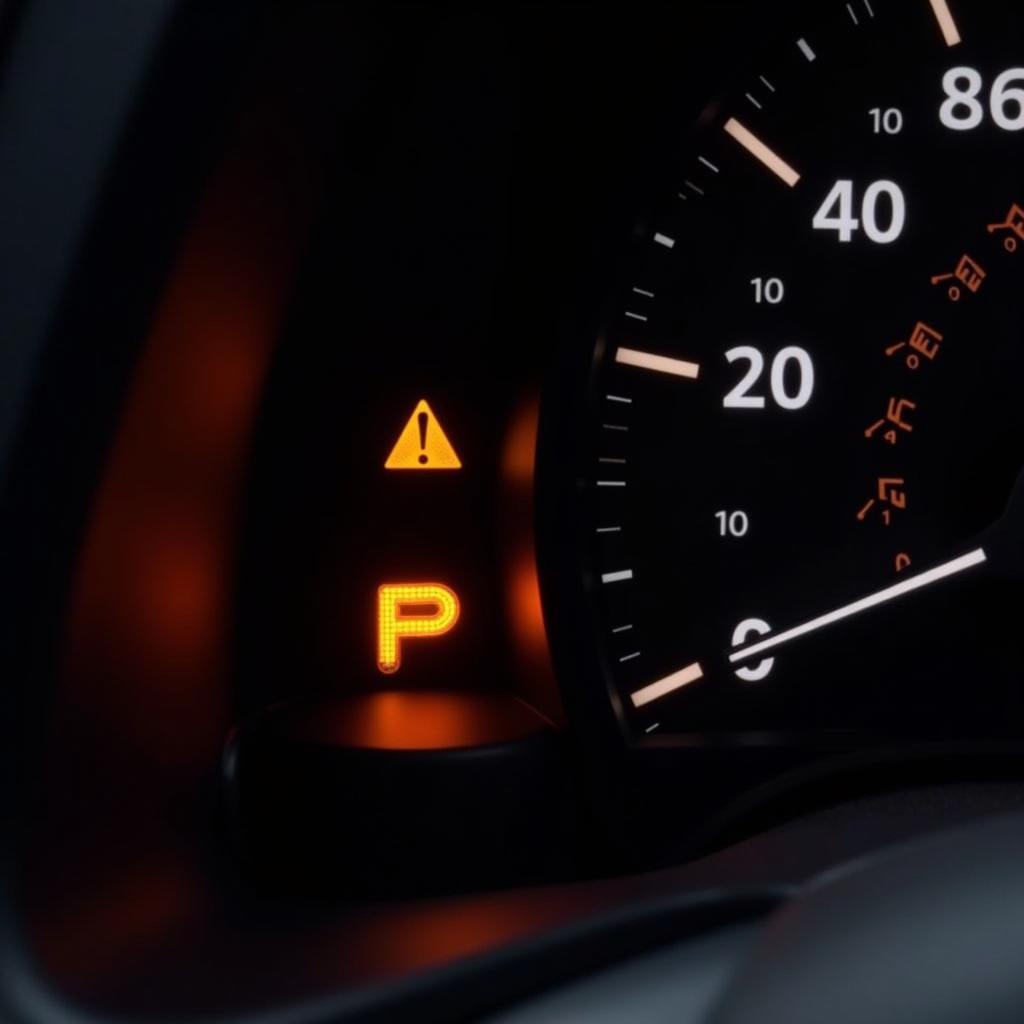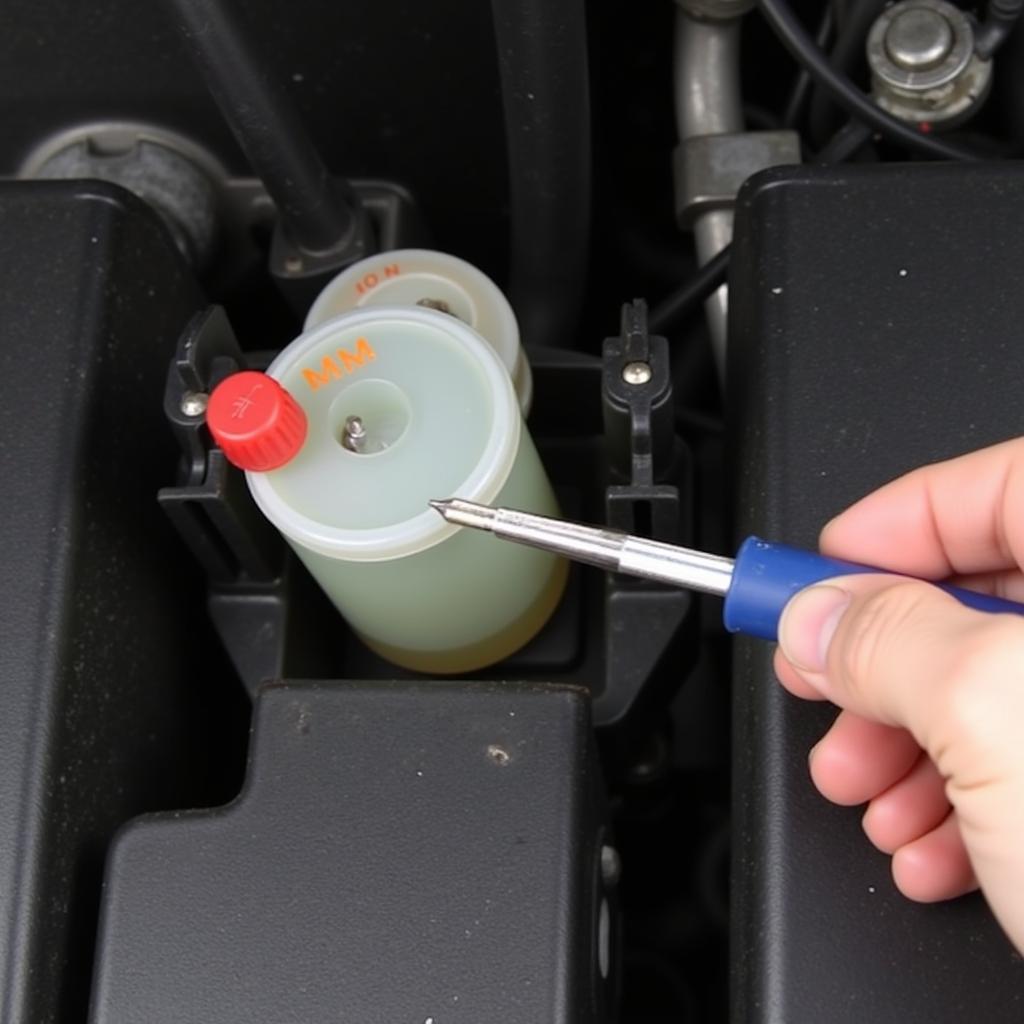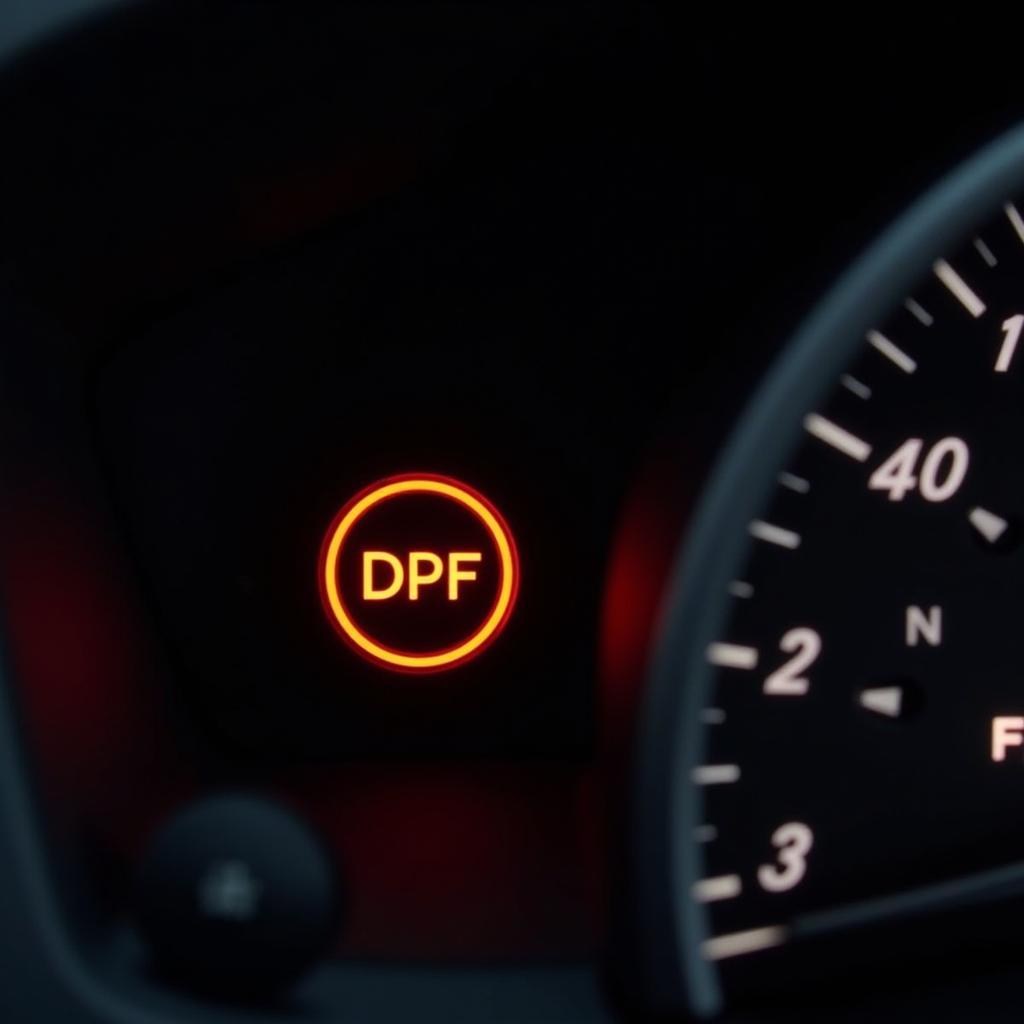The amber brake warning light on your Nissan Qashqai can be a source of anxiety. This comprehensive guide will delve into the common causes, diagnostic procedures, and potential solutions for this issue, empowering you to address it effectively. We’ll explore everything from simple checks to more complex scenarios, providing you with the knowledge you need to get back on the road safely.
Understanding the Amber Brake Warning Light
The amber brake warning light, distinct from the red brake warning light, typically signals a less critical, yet still important, issue with your Nissan Qashqai’s braking system. While a red light usually indicates a complete brake failure or a critical drop in brake fluid, the amber light can point to several different problems. Ignoring this warning light could lead to more serious issues down the line, so it’s crucial to understand what might be causing it.
 Nissan Qashqai dashboard displaying the amber brake warning light
Nissan Qashqai dashboard displaying the amber brake warning light
Common Causes of the Amber Brake Warning Light in a Nissan Qashqai
Several factors can trigger the amber brake warning light in your Nissan Qashqai. Some of the most common causes include:
- Low Brake Fluid Level: This is the most frequent culprit. Check your brake fluid reservoir; if it’s low, it could indicate a leak or worn brake pads. low brake fluid level warning
- Worn Brake Pads: As your brake pads wear down, they trigger a sensor that illuminates the amber warning light.
- Faulty ABS Sensor: A malfunctioning Anti-lock Braking System (ABS) sensor can also trigger the amber light.
- Parking Brake Engaged: Sometimes, the light may simply indicate that the parking brake is still partially engaged.
Diagnosing the Problem: A Step-by-Step Guide
- Check the Parking Brake: Ensure the parking brake is fully released. This simple step can sometimes resolve the issue.
- Inspect the Brake Fluid Level: Open the hood and locate the brake fluid reservoir. Check the fluid level against the minimum and maximum markers.
- Check Brake Pad Thickness: Visually inspect your brake pads through the wheel spokes. If they appear thin, they likely need replacing.
- Scan for Diagnostic Trouble Codes (DTCs): Using a diagnostic scanner, you can retrieve specific codes that pinpoint the issue.
 Checking the brake fluid level in a Nissan Qashqai
Checking the brake fluid level in a Nissan Qashqai
Solutions and Repairs
Depending on the diagnosis, the solution could range from simple top-ups to more complex repairs:
- Adding Brake Fluid: If the fluid is low, top it off with the correct type of brake fluid. brake warning light orange
- Replacing Brake Pads: Worn brake pads require professional replacement.
- Repairing or Replacing ABS Sensors: Faulty ABS sensors need to be diagnosed and either repaired or replaced.
“Regular brake system maintenance, including fluid checks and pad inspections, can prevent many of the issues that trigger the amber warning light,” says automotive expert, David Miller, ASE Certified Master Technician.
Remote Diagnostics and Software Solutions
In some cases, remote diagnostics and software updates can resolve certain issues related to the amber brake warning light. This cutting-edge technology allows technicians to access your vehicle’s systems remotely, diagnose problems, and even install software updates to fix bugs or improve performance.
Conclusion
The amber brake warning light on your Nissan Qashqai shouldn’t be ignored. By understanding the potential causes and following the diagnostic steps outlined above, you can identify the problem and take appropriate action. Remember, addressing the issue promptly can prevent more serious problems and ensure your safety on the road. Don’t hesitate to seek professional help if you’re unsure about any aspect of the diagnostic or repair process. Maintaining your Nissan Qashqai’s braking system is crucial for safe and reliable driving.
“Remote diagnostics and software updates are increasingly important tools in modern automotive repair. They can often save time and money by identifying and resolving issues quickly and efficiently,” adds Sarah Chen, Lead Software Engineer at AutoTech Solutions.
FAQ
- What’s the difference between the amber and red brake warning lights? The amber light typically signals a less critical issue, while the red light indicates a serious problem requiring immediate attention.
- Can I drive with the amber brake warning light on? While you might be able to drive a short distance, it’s strongly recommended to address the issue promptly.
- How often should I check my brake fluid? Checking your brake fluid level at least once a month is a good practice.
- How long do brake pads typically last? Brake pad lifespan varies depending on driving habits and conditions, but they generally need replacing every 20,000 to 70,000 miles.
- Is it expensive to repair or replace ABS sensors? The cost varies depending on the specific sensor and labor rates, but it’s generally a moderate expense.
- What type of brake fluid should I use in my Nissan Qashqai? Consult your owner’s manual for the correct type of brake fluid.
- Can a low battery cause the amber brake warning light to come on? While less common, a very low battery can sometimes affect various systems, including the braking system’s warning lights.

